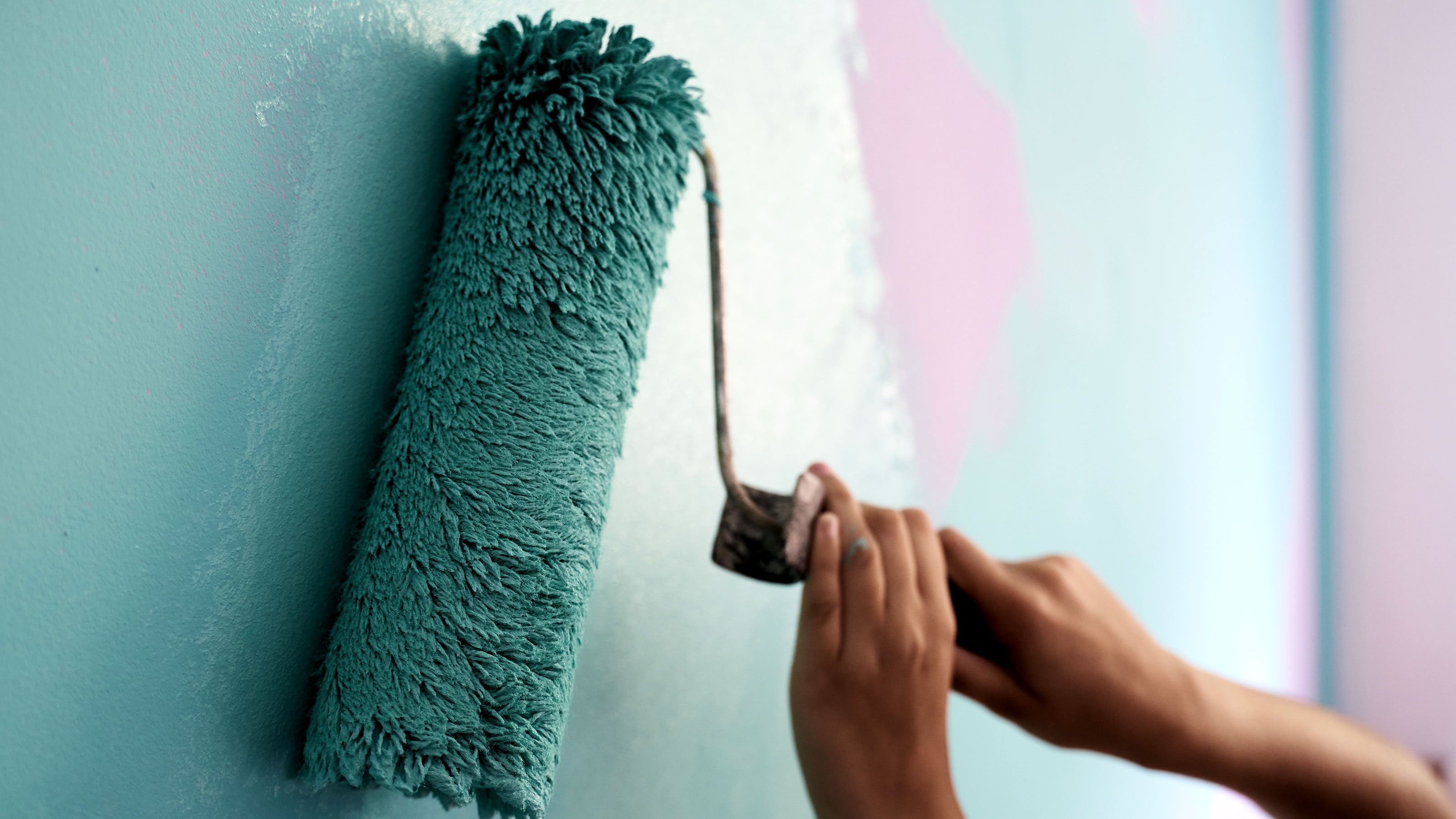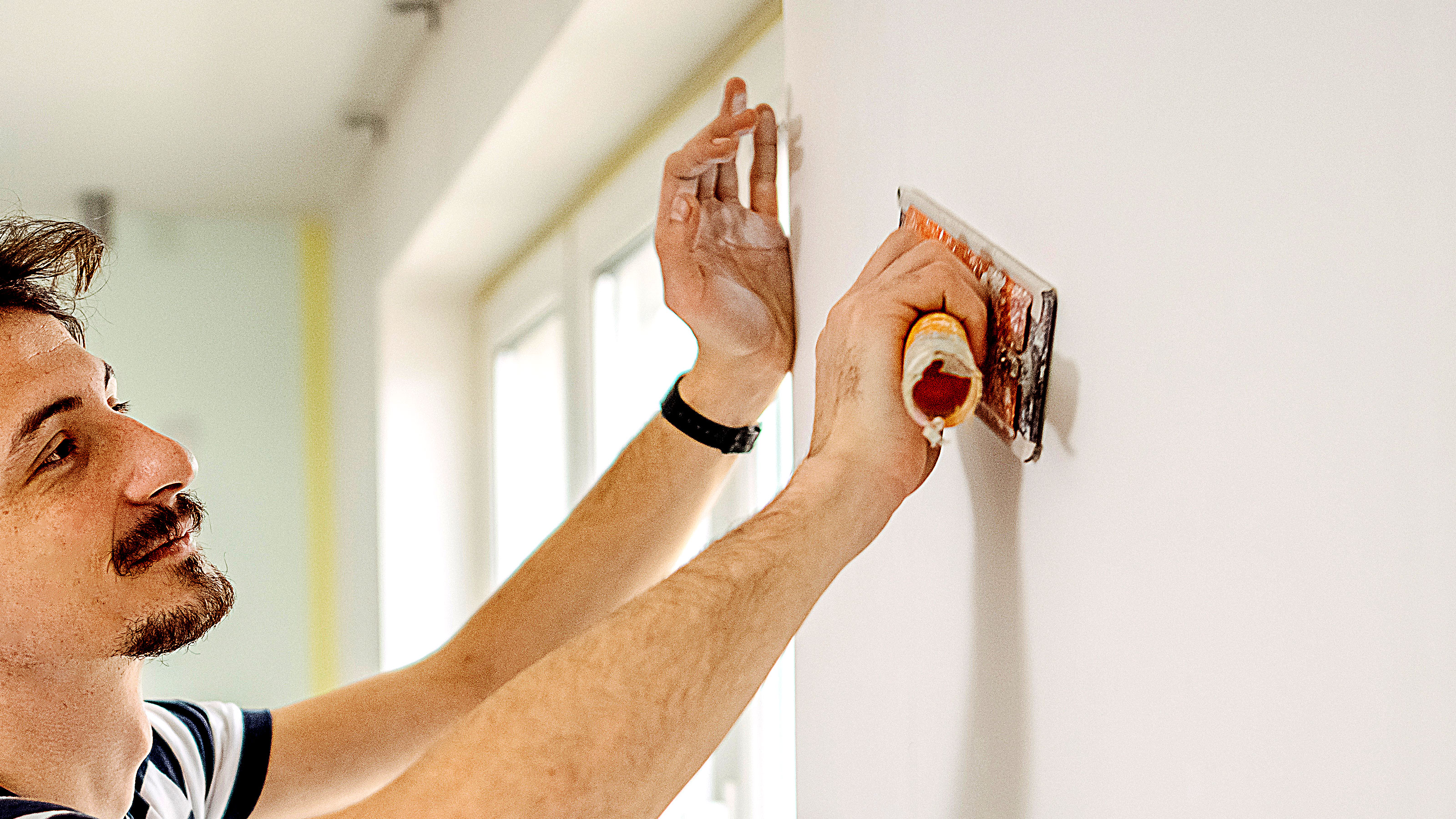Can you paint matt over silk? Yes you can — and we tell you how
DIYers often ask Can you paint matt over silk? You can, but there’s a few straightforward steps you need to know. Here the experts offer essential quick tips

Can you paint matt over silk? Well, if you want to update your walls with a matt finish it isn't quite as simple as slapping matt paint over your existing silk finished walls. You will need to do some prep work as painting straight onto a shiny finish will not give you the professional finish you probably seek.
Those painting a wall might choose a matt emulsion due to it having a low sheen, making it better at hiding imperfections. Meanwhile, silk paint has a slightly shiny finish that reflects light.
Here we tell what you need to know to get a pro finish when adding matt paint over existing silk painted walls.
Can you paint matt over silk? What happens if you don't prep properly
If you paint matt emulsion straight onto silk painted walls without any prep, it's likely you won’t like the results. As Helen Shaw, Director of Marketing (International) at Benjamin Moore explains, “A matte paint has a low sheen, so applying over silk paint which is a mid-sheen can cause problems as the matte paint is less flexible so as it dries there is a risk it will shrink and crack causing crazing."
So what is crazing? When the top layer of paint dries it doesn’t adhere properly to the layer below and splits, typically leaving vertical splits across a wall. Your walls will end up looking a little like the bottom of a river bed in a drought.
Why doesn’t matt paint stick to silk paint?
A mid sheen paint produces a shiny finish that has more waterproof qualities, hence why it is a more popular choice for high traffic areas. It is more resistant to water, which makes up around 40% of paint. So you need to disturb the silk paint surface to create better adhesion. Find out more in our types of paint guide.
How do you prepare silk walls for matt paint?
There are a couple of effective options that will help matt paint adhere to silk walls. Sanding is one option as Michael Rolland, DIY Expert at The Paint Shed: reveals, “A way it can be done is by using sandpaper to remove the gloss surface before painting. I recommend a grade 100 sandpaper, and make sure that the surface is sanded properly with no sections being missed. A hand sander would also speed up the process.”
Hand sanders like the Stanley 305 x 101 mm Hand Sander from Amazon allows you to attach sandpaper securely and cover more area much more quickly. For harder to reach areas, such as the top of walls you can use a pole sander like the ProDec 360 Degree Heavy Duty Swivel Pole Sander Head from Amazon so you won’t have the hassle of getting up and down a ladder.
While sanding painted walls is one way to paint matt over silk, there is another way to avoid crazing, as Shaw explains. “The best way to avoid this is to use a quality matte paint with a high resin content such as an 100% acrylic, paint and primer in one. We suggest the Aura or Regal Select Matte paints as these are less prone to crazing and have a high adhesive.”
An alternative is to use a sealer like Zinsser Bulls Eye 1-2-3 White Multi-surface Primer, sealant & stain block from B&Q.

Get the Homebuilding & Renovating Newsletter
Bring your dream home to life with expert advice, how to guides and design inspiration. Sign up for our newsletter and get two free tickets to a Homebuilding & Renovating Show near you.
Steve Jenkins is a freelance content creator with over two decades of experience working in digital and print and was previously the DIY content editor for Homebuilding & Renovating.
He is a keen DIYer with over 20 years of experience in transforming and renovating the many homes he has lived in. He specialises in painting and decorating, but has a wide range of skills gleaned from working in the building trade for around 10 years and spending time at night school learning how to plaster and plumb.
He has fitted kitchens, tiled bathrooms and kitchens, laid many floors, built partition walls, plastered walls, plumbed in bathrooms, worked on loft conversions and much more. And when he's not sure how to tackle a DIY project he has a wide network of friends – including plumbers, gas engineers, tilers, carpenters, painters and decorators, electricians and builders – in the trade to call upon.

